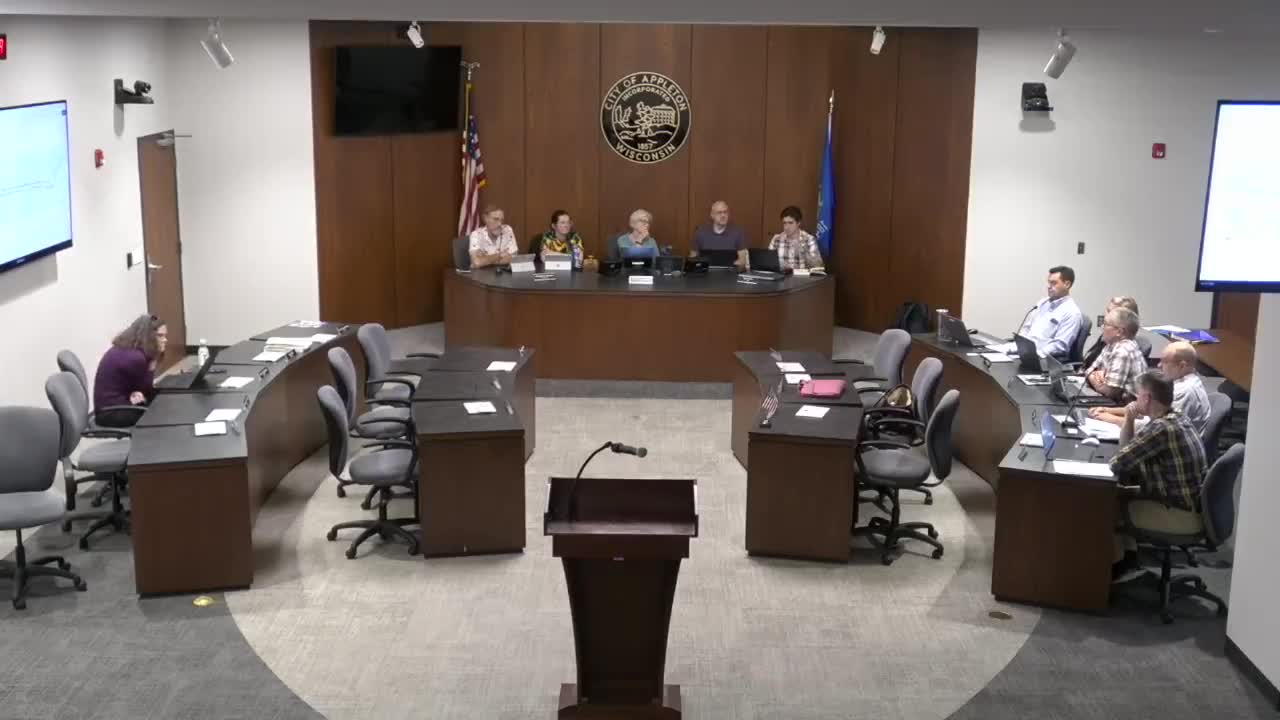City Council Discusses Sixth Street Bike Lane Design for Traffic Safety
September 22, 2025 | Appleton City, Winnebago County, Wisconsin
This article was created by AI summarizing key points discussed. AI makes mistakes, so for full details and context, please refer to the video of the full meeting. Please report any errors so we can fix them. Report an error »

In a recent meeting of the City of Appleton's Municipal Services Committee, city officials engaged in a thoughtful discussion about enhancing safety for cyclists and pedestrians along Sixth Street. The conversation centered on the critical need to separate bike lanes from both vehicular traffic and pedestrian pathways, particularly near busy intersections that handle approximately 30,000 vehicles daily.
The committee emphasized best practices in urban design, advocating for the creation of dedicated bike paths—either as side paths or protected street-level lanes. This approach aims to provide safer crossing opportunities for cyclists, reducing the risk of accidents at high-traffic intersections. The first block of Sixth Street was highlighted as a key area for these improvements, with plans to elevate bike lanes off the street to ensure a safer experience for all road users.
While there are no immediate plans for developments east of State Street, officials expressed a desire to design the current block in a way that allows for future flexibility. This consideration is crucial due to existing complications related to on-street parking and agreements with Outagamie County. The committee believes that by implementing these changes now, they can better manage traffic flow and enhance safety at the intersection.
Alderperson Serkas contributed to the discussion by noting the importance of extending bike paths from Badger Avenue to State Street. This extension is seen as a way to encourage cyclists to divert from the congested Memorial Drive, which is a four-lane highway, and utilize State Street as a preferred north-south route. By creating a more accessible and safer biking environment, the city hopes to promote cycling and walking as viable alternatives to driving, ultimately easing congestion and improving overall traffic dynamics in the area.
As the committee continues to explore these developments, the focus remains on creating a safer, more efficient transportation network that accommodates the needs of all residents. The discussions reflect a proactive approach to urban planning, aiming to foster a community where biking and walking are not only safe but also encouraged.
The committee emphasized best practices in urban design, advocating for the creation of dedicated bike paths—either as side paths or protected street-level lanes. This approach aims to provide safer crossing opportunities for cyclists, reducing the risk of accidents at high-traffic intersections. The first block of Sixth Street was highlighted as a key area for these improvements, with plans to elevate bike lanes off the street to ensure a safer experience for all road users.
While there are no immediate plans for developments east of State Street, officials expressed a desire to design the current block in a way that allows for future flexibility. This consideration is crucial due to existing complications related to on-street parking and agreements with Outagamie County. The committee believes that by implementing these changes now, they can better manage traffic flow and enhance safety at the intersection.
Alderperson Serkas contributed to the discussion by noting the importance of extending bike paths from Badger Avenue to State Street. This extension is seen as a way to encourage cyclists to divert from the congested Memorial Drive, which is a four-lane highway, and utilize State Street as a preferred north-south route. By creating a more accessible and safer biking environment, the city hopes to promote cycling and walking as viable alternatives to driving, ultimately easing congestion and improving overall traffic dynamics in the area.
As the committee continues to explore these developments, the focus remains on creating a safer, more efficient transportation network that accommodates the needs of all residents. The discussions reflect a proactive approach to urban planning, aiming to foster a community where biking and walking are not only safe but also encouraged.
View full meeting
This article is based on a recent meeting—watch the full video and explore the complete transcript for deeper insights into the discussion.
View full meeting
